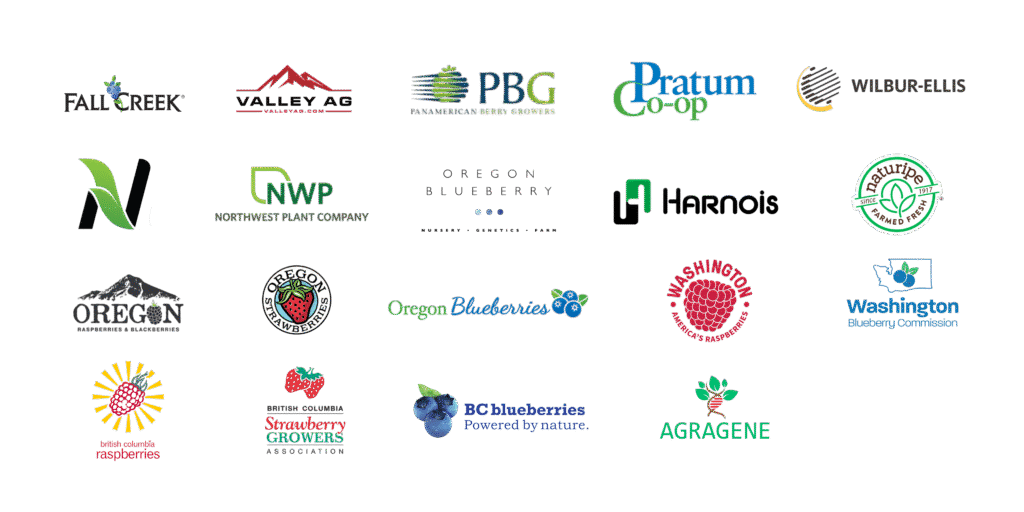bird control
Choosing a Falconer
Each abatement falconer interviewed had his own “best methods” for bird abatement, but the basic rules are the same across the board.

There are different industries and crops using falconry, and while some techniques are specific to blueberries, in general, experience in one crop means that the bird and bird handler can likely adapt to the other. Go to Falconry Techniques for more information on these methods.
Healthy Birds
- A professional falconer should maintain healthy birds and allow a grower to view them.
- To keep raptors healthy, they should be served a high protein diet such as quail. This protein-rich diet should be similar to what the raptors eat in the wild and strengthen the birds by providing them with plenty of calories to burn as they harass starlings instead of eating them. Rich beak color is one easy indicator of a healthy raptor.
- The raptors should be kept out of midday sun and kept cool using water sprays throughout the day.
- When raptors are not flying, their metabolism should be monitored.
In the field
A successful bird abatement program using raptors requires highly trained raptor specialists, several raptors, noise makers to possibly supplement raptor techniques, and a bird management strategy that begins before fruit ripens and birds establish feeding or nesting habits in the field. Growers should caution against using inexperienced bird handlers.
Only one falcon should fly at a time, though each raptor may patrol a number of times each day.
The falconer should have tracking device on the raptor as well as visually monitor the raptor’s whereabouts at all times in case it disappears from sight and to keep larger raptors from harming the raptor.
Not all bird handlers use a tracking device, but in agriculture the investment is vital. A raptor, which can receive hundreds of hours of training and can be worth thousands of dollars, is well worth the investment of a tracking device.
When in the field, a falconer should be working his or her raptors and keeping a constant eye out for pest birds.
Finding an experienced Falconer
Seek recommendations from growers, including growers of other crops, who have had success using falconry techniques in their bird management program.
The falconer should be specifically trained in bird abatement. That is, the falconer should be trained to haze pest birds instead of eat them and should seek out pest birds, not rodents.
You can also contact a local falconers association (Oregon | Washington) and request the contact information of someone with bird abatement expertise.
If using a falconer is your primary bird management program, consider working with a company rather than an individual. Companies can substitute a bird handler who is unable to complete the season.
The falconer you contact should use more than one raptor on a daily basis. A single bird handler using only one raptor is a risky model for a commercial blueberry grower, and using several raptors ensures that money isn’t lost on a sick bird or on efforts made to retrieve a truant raptor. Multiple raptors can also cover more area for longer periods of time, and a serious bird handler will equip each of their raptors with a tracking device.
The falconer you are considering should also ask questions specific to your farm and be open to supplemental bird management techniques. As one bird handler interviewed for this project commented: “It is a good sign when the falconer is trying to get a lay of the land and not imposing his knowledge of falconry as the cure all.”
A quality falconer will have the ability to verbally communicate his or her knowledge and experience in the field and be able to tell the grower why a particular bird is good at hazing a particular species.
One falconer interviewed for this projected suggested that a grower ask how many days instead of years a bird handler has flown his or her birds for bird abatement in the field. A professional should be able to give the grower a round figure. A five-year licensed falconer may have only flown a bird a few times for the purpose of bird abatement during that period, whereas a two-year certified bird abator may have obtained twice as many days experience in bird abatement work.
At minimum, every falconer should have a bird abatement or falconry license and provide these credentials as well as recommendations from previous clients. To become a master falconer, one has to obtain a sponsor, be an apprentice for two years, and spend five years as a general falconer.
Other Recommendations
Sign a contract.
Use multiple raptors and bird tracking devices, and, if opting to use a single bird handler, have an alternative bird management plan in case something happens to the bird handler during the season.
Use a systematic approach and outline your expectations of a program when designing it with the falconer to ensure your satisfaction throughout the season.
Meet several times with the falconer before the season starts. Common practice is to contact a falconer early and contract for the coming year.
